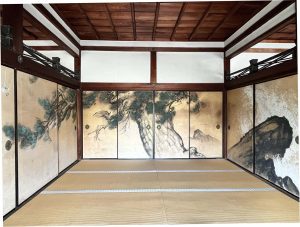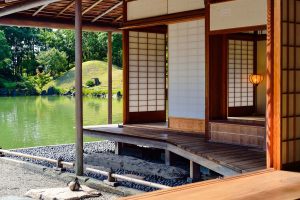Would you like to know why do Japanese houses have paper walls?
In this article, Yukari Ishii, a Japanese artist living in Japan, explains five reasons to the question “Why do Japanese houses have paper walls?”.
Looking at traditional Japanese houses, you may get the impression that there are many “paper walls”.
In fact, what appear to be “paper walls” are sliding doors made of paper called “shoji” or “fusuma”.
A shoji is a sliding door that separates a room from the outdoors or a room from a hallway, and also serves as a window to let in light.
A fusuma, a kind of a sliding door, is the entrance to a room and serves to divide the room as if it were a wall.
In rainy and humid Japan, why do Japanese houses have sliding paper doors like “paper walls”?
Let’s take a closer look at the reasons for this.
We will also discuss How do Japanese homes stay warm with “paper walls” in the winter.
☑ Table of Contents
- Why do Japanese houses have “paper walls”? 5 reasons
- Can “paper walls” withstand rain and moisture?
- How do Japanese homes stay warm with “paper walls”?
Why do Japanese houses have “paper walls”? 5 reasons
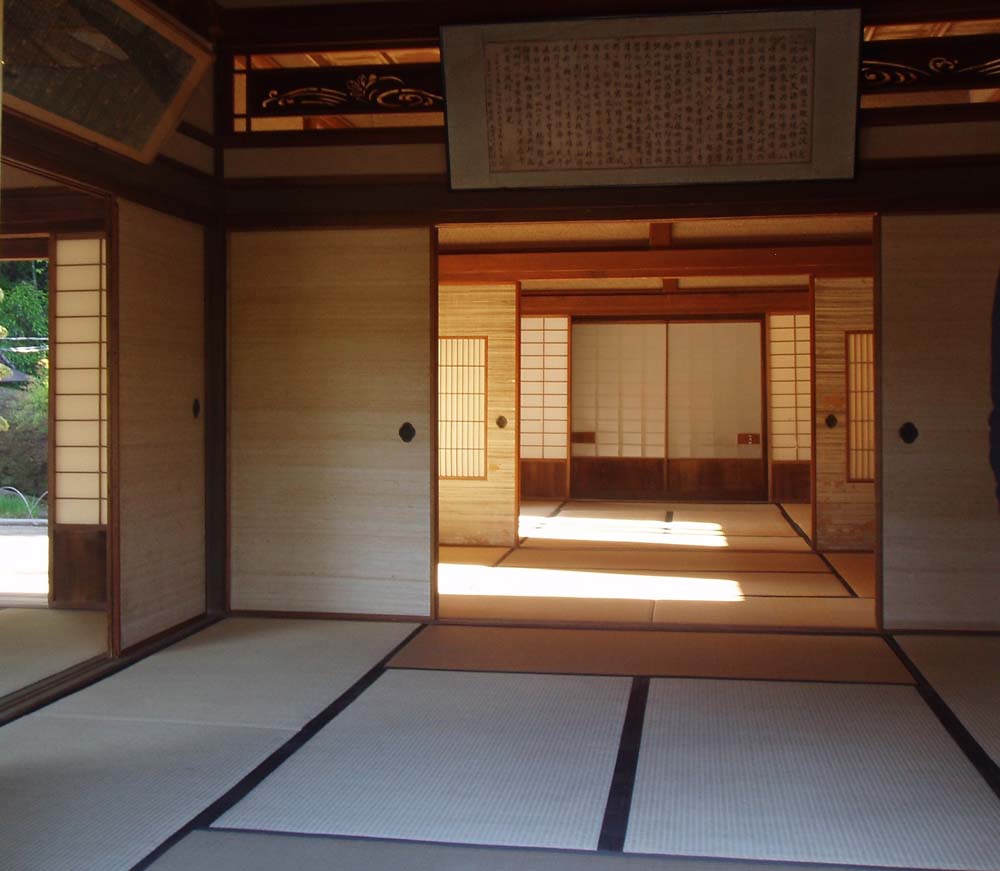
What are japanese “paper walls” called?
Traditional Japanese houses have sliding paper doors called “shoji” or “fusuma”.
These also serve as entrances to other rooms.
Because of their large size, shoji and fusuma doors may look like “paper walls”.
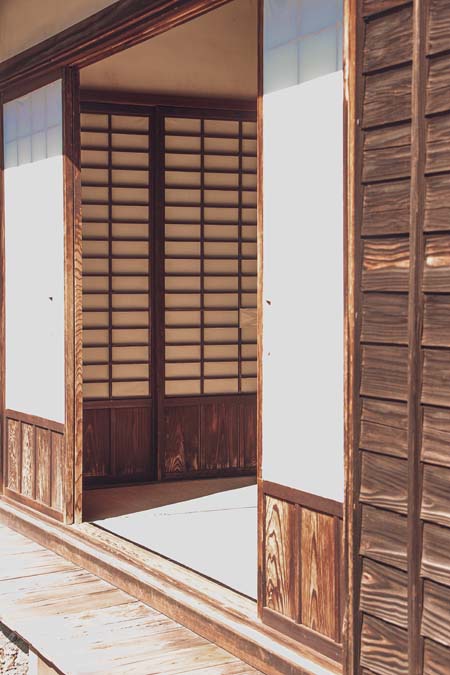
A shoji is a sliding door that separates a room from the outdoors or a room from a hallway, and also serves as a window to let in light.

A fusuma, a kind of a sliding door, is the entrance to a room and serves to divide the room as if it were a wall.
Why are japanese walls made of paper? Sliding doors like “paper walls”
However, shoji and fusuma are sliding doors that we can open and close.
In Japanese houses, people open shoji doors facing the outside when viewing the garden or for ventilation.
Fusuma also serve as partitions between rooms, and when we use a room, close the fusuma.
When you want to use a larger room together with the room next door, you open the fusuma between the rooms.
Furthermore, you can use the two rooms as one by removing the fusuma between two rooms.
This is because removing the fusuma gets off the partition between the two rooms.
So, why do Japanese houses have paper doors called shoji and fusuma?
Let’s take a closer look at the reasons for this.
1. paper doors can always be kept fresh.
Houses have been built using wood, grass, and other plant materials, because Japan is a heavily forested and rainy country.
Shoji and fusuma (sliding doors) are made by traditional Japanese paper called “washi” onto a wooden frame.
Therefore, we can replace when they become soiled or torn, and can always keep in a new condition.
Shoji and fusuma, which people can replace at any time, are housing components that suit Japanese sensibilities.
This is because Japanese people like to make things new, such as changing the surface of tatami mats on the floor or replacing thatch of the roof.
2. one can feel the presence of people in the next room.
When a fusuma of sliding door separates a room, you can feel the presence of people in the next room.
In addition, you can hear the voices of people in the room even from the hallway.
In a sense, you could say that there is no privacy.
We could say that there is very little “privacy” or “individually owned space” in traditional Japanese housing.
Rooms belong to the family, and there is no separation between individuals.
Japanese people value “attentiveness” and “consideration” to those around them.
For this reason, rooms separated by shoji or fusuma sliding doors, through which one can feel what others are doing, are suited to the Japanese way of life.
This is because people are aware of those around them, when spending time together as a family or in a group.
3. paper doors become a room with a beautiful interior.
In traditional Japanese houses, shoji and fusuma sliding doors have been made of “washi” (Japanese paper).
Washi is a traditional Japanese paper.
This paper is made from the fibers of kouzo, mitsumata, and gampi.
Washi has a unique and beautiful fiber texture.
Therefore, when we use washi for doors, it gives a room an elegant and calm impression.
“Fusuma-e” (a Painting on fusuma)
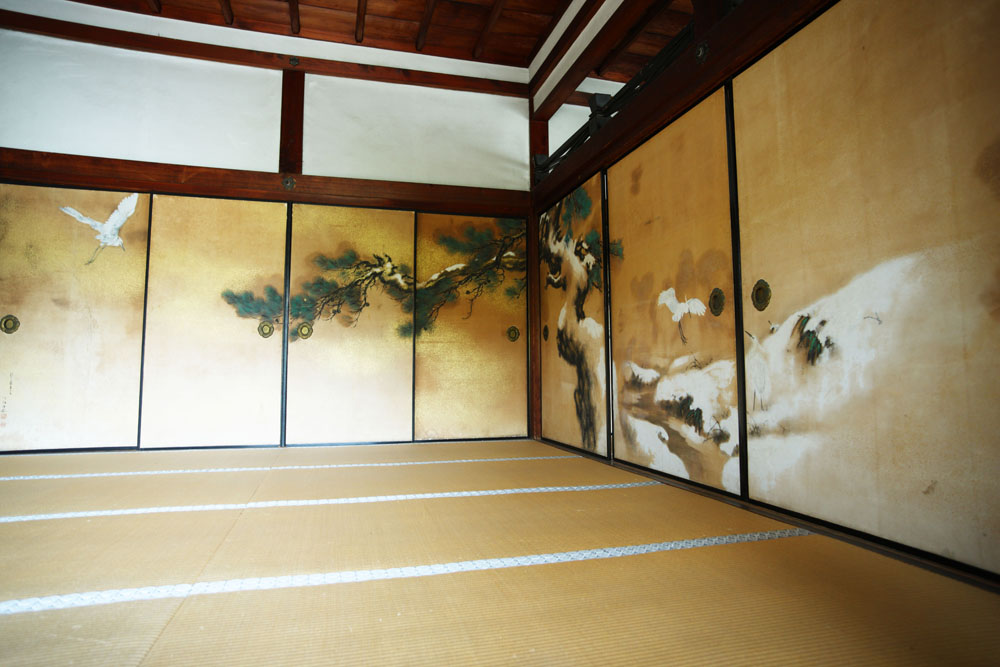
In addition, you can see “fusuma-e,” in which paintings are drawn on the front surface of the fusuma made of Japanese paper in Japanese residences and temples.
The picture above is a painting on fusuma in the Shiroshoin of the former Omuro Gosho in Ninna-ji Temple.
Fusuma-e is a sliding door decoration.
Japanese paintings are generally painted on Japanese paper or silk.
A Japanese-style painting on the surface of the fusuma would make the room more fashionable.
If you would like to know traditional Japanese room decor, please look at the following article.
>> Traditional Japanese Room Decor – Spirit To Enjoy Aesthetic
You can also know further information of how to see fusuma painting in the article below.
>> Fusuma-e (Fusuma Paintings) – How to See at Kyoto Temple
4. It has the ability to adjust brightness.
A shoji blind is a sheet of Japanese paper affixed to a wooden frame.
So, shoji has the function of adjusting the brightness of the room.
Even when you close the shoji, the room does not become dark because it allows light from outside the window to pass through.
For this reason, we often use shoji screens as windows or doors facing the outside, keeping the room bright during the day.
In modern housing, shoji screens are like “lace curtains”.
This is because they keep the room from being seen from the outside while maintaining the brightness of the room.
Shoji screens were very useful in an era when there was no glass, because they let in light that wooden or metal doors could not let in.
5. The are light and easily transportable.
A characteristic of Japanese rooms is “flexible”.
This is because people can change the size of the room flexibly according to the situation.
For example, when Japanese invite a large number of guests or a gathering is held, they have been removed the fusuma sliding doors between two rooms and have been used the two rooms as one large room.
A fusuma is a door made of a wooden frame and covered with paper on the front and back, making it very light.
This makes them easy to remove and transport.
The fact that housing components are “flexible” suits the Japanese way of living.
Can “paper walls” withstand rain and moisture?
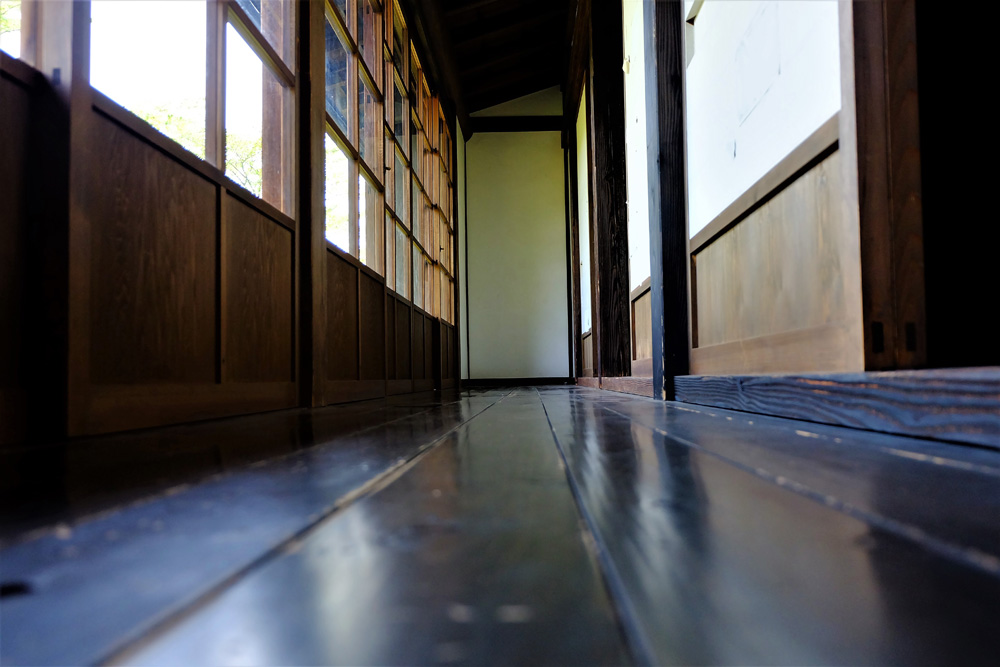
Are japanese houses made of paper?
We have already explained in the previous section that shoji and fusuma, which look like “paper walls,” are sliding doors and windows made of paper.
Now, let’s take a look at whether shoji and fusuma doors and windows made of paper can withstand rain and moisture.
Let’s take a look at the following.
Long eaves protect shoji from rain.
Japan is a rainy country.
In such an environment, why is there no problem using doors and windows made of paper?
We use shoji as walls, doors, and windows that separate the outside from the inside of a house.
Japanese houses have “noki” (eaves) where the roof protrudes beyond the walls.
Old Japanese houses have long eaves.
These long eaves prevent rain from falling on windows and doors facing outward.
Thus, even if it rains, the shoji screens do not get wet.
On the other hand, fusuma are doors between rooms or between a room and a hallway, and people use them as partitions in a house.
A fusuma door is never installed as a wall or door separating the house from the outside where it is exposed to rain.
“Amado” (storm shutters) protect against typhoons.
“Typhoons” that bring strong winds and heavy rain visit Japan in summer.
On the outside of the shoji facing the outside, there is a sliding wooden door called a “amado” (storm shutters).
When a typhoon comes, we close the outer shutter.
This way, even if the wind is strong, rain will not enter the house and the shoji will not get wet.
Glass doors outside of shoji protect them from rain in modern Japanese houses.
Modern Japanese houses have glass doors on the outside of shoji windows and doors.
If you close the glass doors when it rains, the shoji screens will not get wet.
Structure to protect against humidity
In Japan, humidity is particularly high during the rainy season in June and during the summer months.
Traditional Japanese houses have many devices to prevent the high humidity inside the house to make them comfortable to live in even during these seasons.
Fusuma and shoji (sliding paper doors) do not ripple or blister even during the humid season because of the following structures.
1. “Tsuchi-kabe” (earthen walls)
Old Japanese houses have earthen walls made of woven bamboo coated with soil.
We sometimes apply “Shikkui” (plaster) over the clay as an interior decoration.
“Tsuchi-kabe” (earthen walls) absorb moisture during rainy seasons of high humidity.
2. Tatami room
In a tatami room, “tatami” mats, whose surface is made of a plant called “igusa”, are laid on the floor.
These tatami absorb moisture, so the room does not become humid even during periods of high rainfall.
3. Wooden Houses
Japanese houses are made of wood.
In addition to structural members such as posts (pillars), ceilings and hallways are also made of wood.
These woods work to absorb moisture.
4. Shoji screens and fusuma sliding doors
Shoji and fusuma sliding doors are made of Japanese paper, “Washi” and wood.
Washi absorbs moisture easily and helps regulate humidity.
How do Japanese homes stay warm with “paper walls”?
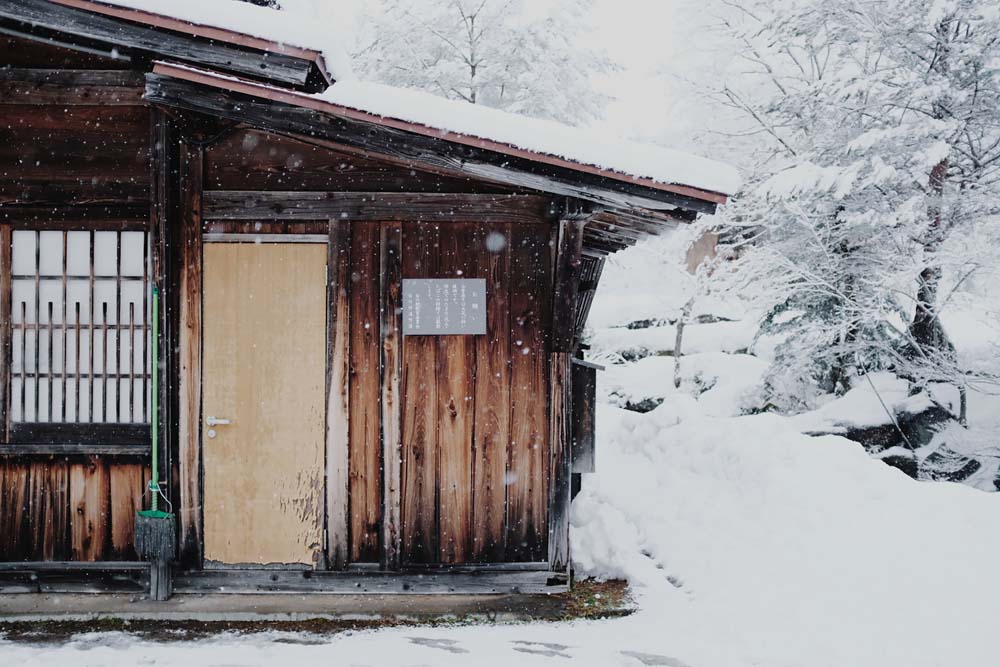
How do Japanese heat their homes?
Traditional Japanese homes have sliding doors and windows made of paper called shoji or fusuma, and earthen walls.
Shoji and fusuma, which look like “paper walls,” prevent cold air from entering the house in the winter.
Let us show you how they keep Japanese homes warm in winter.
Warming rooms with a “hibachi” (brazier).
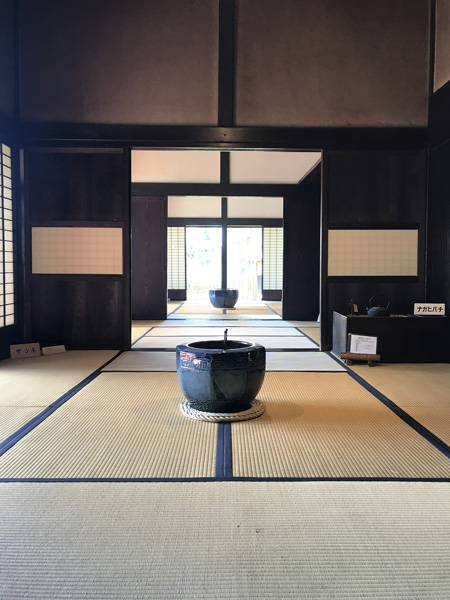
In Japanese homes, “hibachi” (brazier) has been used as a way to warm rooms in winter.
A brazier is a metal or ceramic container in which people place charcoal to heat a room by burning the charcoal.
The image of a brazier may be easier to understand if you think of a “small fireplace”.
Heating with a “irori” (hearth).

(Photo by (c)Tomo.Yun)
In areas where winters are severely cold or in rural areas, there are hearths in the house.
Burning wood or charcoal in this hearth can heat the room.
You rarely find “central heating” in Japan now and in the past.
Therefore, using a brazier or a hearth has been heated each house.
Shoji and fusuma paper has heat-insulating properties.
Washi paper used for shoji screens and fusuma sliding doors is a thin material.
However, the fibers of washi have an insulating effect that keeps cold air from passing through and heat from escaping.
Despite the thinness of the washi, shoji screens are said to let less heat through than glass doors.
Therefore, using shoji and fusuma for doors and windows can prevent cold air from entering the room from outside.
Closing “Amado” (shutters) at night keeps the room warmer.
Traditional Japanese houses have shutters on shoji doors facing the outside.
You can find shoji window screens made of paper also have shutters outside.
Therefore, we close these shutters at night.
Closing the shutters prevents cold air from outside from entering the room.
Closing the shutters at night, when the temperature is lower, makes it harder for the temperature inside the room to drop.
“Kimonos” are surprisingly warm.
Japanese traditional clothes, “kimonos” are surprisingly warm even in winter.
Kimonos, which are made up of many layers, are less likely to let cold air pass through and have long hems, making them feel warmer even in the coldest seasons.
Also, the “secret” of warmth may lie in the kimono’s unique structure, such as the fact that a kimono with an “obi” (belt) sash keeps the stomach from getting cold.
Since the Edo period, a cotton-filled jacket called a “hanten” (“tanzen”) has also been worn inside the house during the cold season.
Were older generations more tolerant of the cold?
Japanese people in the past may have been more resistant to cold.
This is because they lived from childhood in houses that were not equipped with air-conditioning and heating systems as we do today.
I assume that people in olden Japan were accustomed to the cold because many of them worked outside, such as in agriculture.
In modern times, People use oil stoves to heat their house.
In modern times, coal stoves and oil stoves were introduced, and these heaters were used to warm rooms.
People often use air conditioners, kotatsu, and electric heaters as heaters in modern houses.
Thus, traditional Japanese housing has many innovations to keep people warm in winter.
Japanese culture using “washi” paper, which has various advantages, is still very deep.
New Arrivals
-
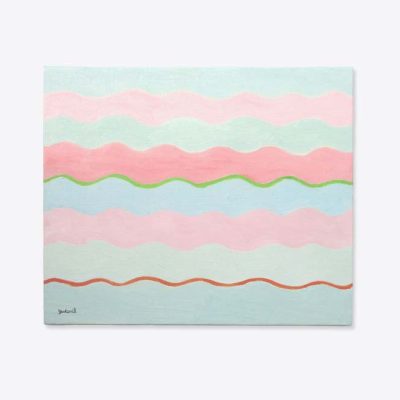 Gentle Flow$1,705.00
Gentle Flow$1,705.00 -
 Go Into The Light$1,364.00
Go Into The Light$1,364.00 -
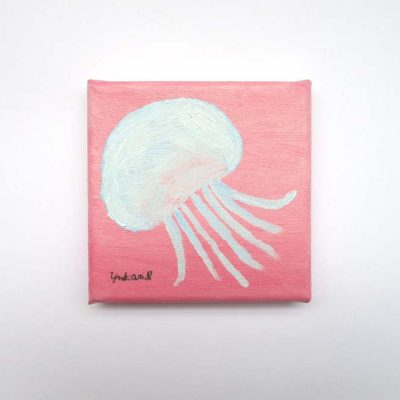 Jellyfish Dream$616.00
Jellyfish Dream$616.00


